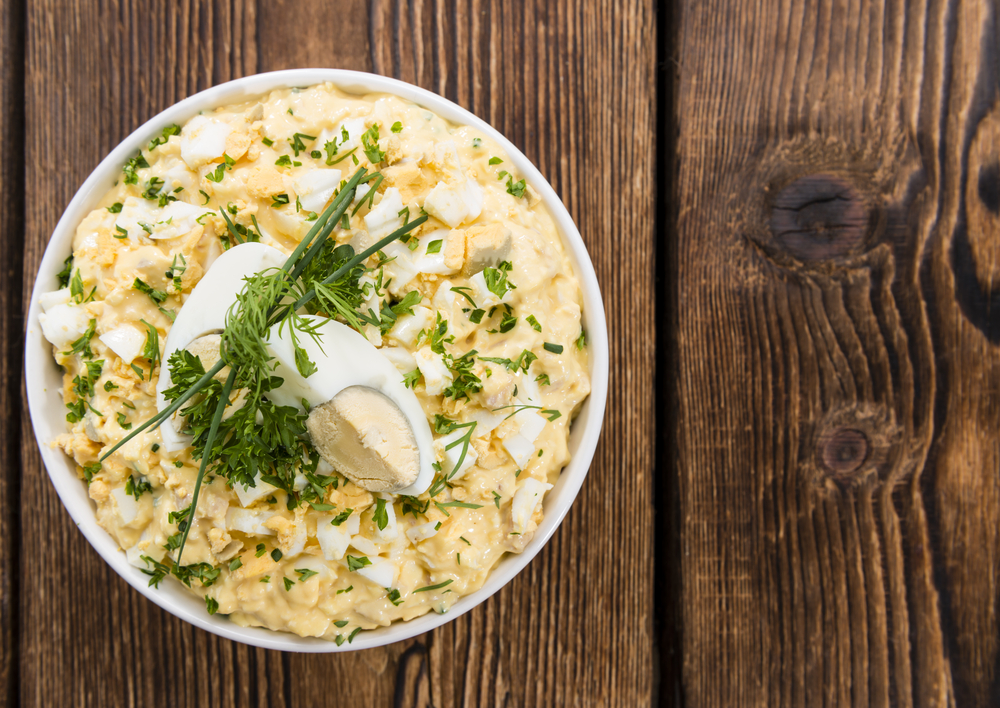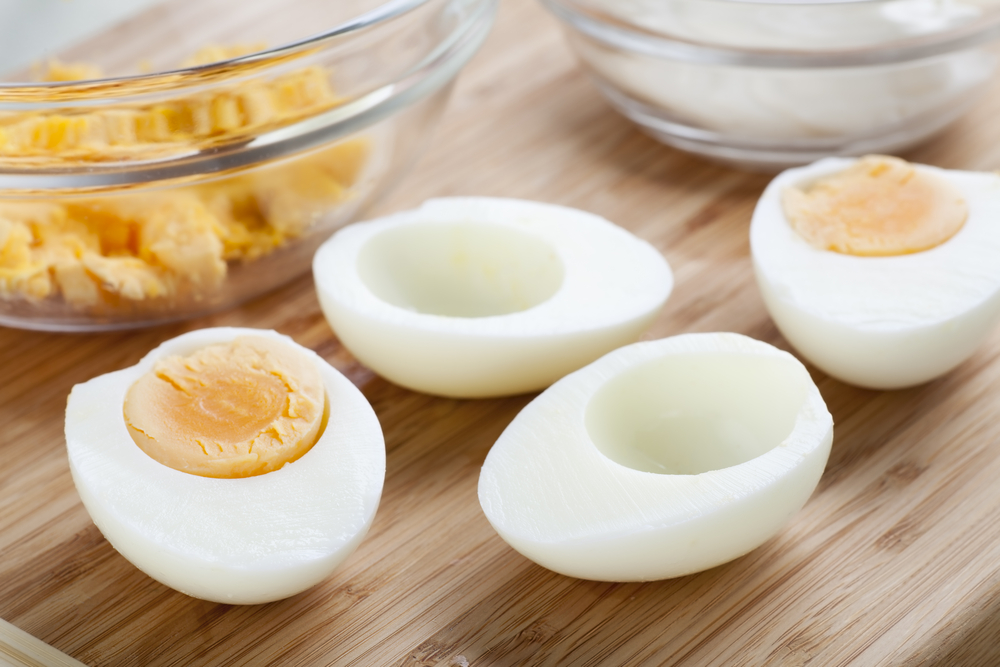As a food lover, I understand the importance of a good hollandaise sauce to elevate any dish. However, reheating hollandaise sauce can be a daunting task, as it is a delicate emulsion that can easily break or become grainy.
Fear not, as I have done the research and experimentation to bring you the best methods for reheating hollandaise sauce.

Understanding hollandaise sauce is key to successfully reheating it. This classic French sauce is made of egg yolks, butter, and lemon juice, and is notoriously difficult to make and reheat.
When reheating hollandaise sauce, it is important to do it gently and gradually to avoid breaking the emulsion. There are two main methods for reheating hollandaise sauce: on the stove and in the microwave.
Key Takeaways
- Hollandaise sauce is a delicate emulsion made of egg yolks, butter, and lemon juice.
- Reheating hollandaise sauce requires a gentle and gradual approach to avoid breaking the emulsion.
- The two main methods for reheating hollandaise sauce are on the stove and in the microwave.
Understanding Hollandaise
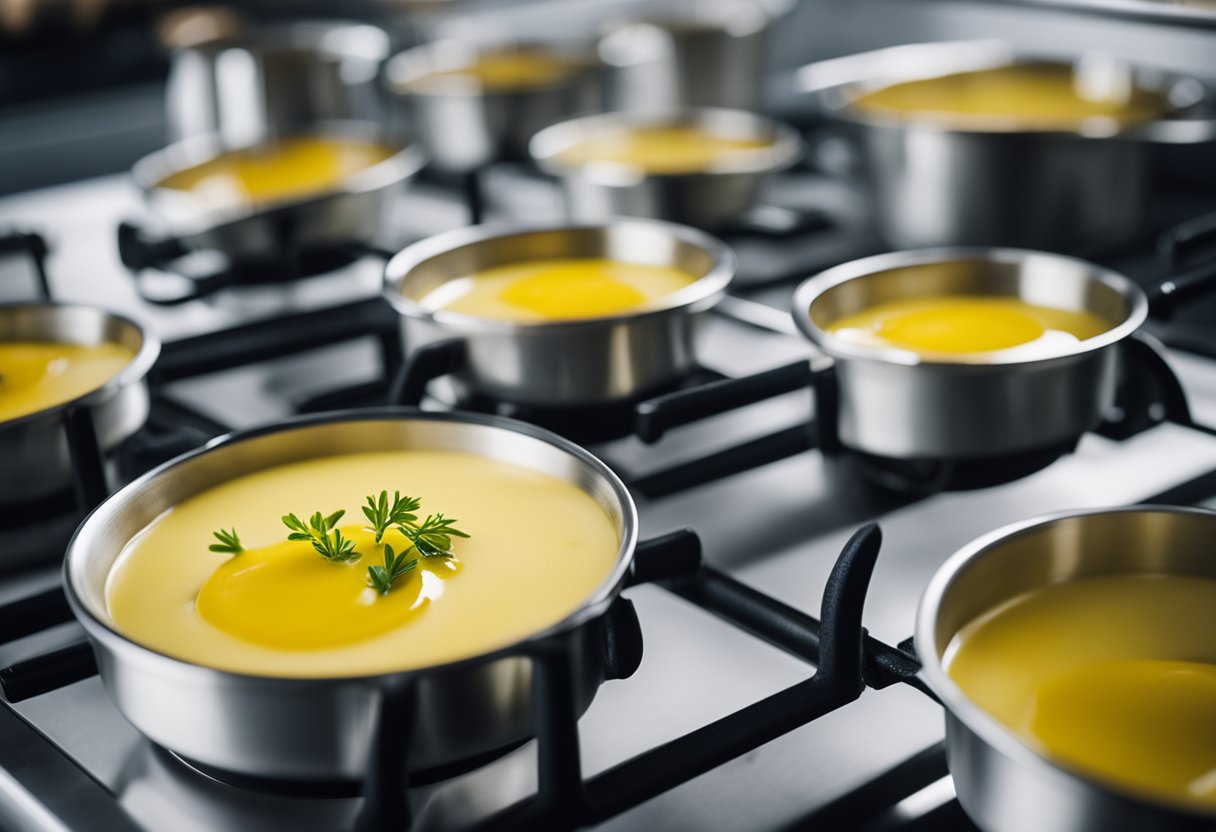
Hollandaise sauce is a classic French sauce that is made by emulsifying egg yolks and melted butter, with the addition of lemon juice, salt, and cayenne pepper.
The result is a rich and creamy sauce with a tangy flavor that pairs well with many dishes.
Eggs are a crucial ingredient in hollandaise sauce, as they provide the emulsifying agents that help to create the creamy texture.
The yolks are whisked together with lemon juice and a bit of water to create a stable emulsion, which is then slowly drizzled with melted butter while continuing to whisk vigorously.
This process creates a smooth and creamy sauce that is perfect for drizzling over eggs benedict or asparagus.
Butter is another key ingredient in hollandaise sauce, as it provides the rich flavor and creamy texture that the sauce is known for. It is important to use unsalted butter, as the sauce already contains a fair amount of salt from the lemon juice and cayenne pepper.
Lemon juice is added to hollandaise sauce to provide a bright and tangy flavor that balances out the richness of the butter. It also helps to stabilize the emulsion and prevent the sauce from breaking.
Cayenne pepper is a common addition to hollandaise sauce, as it provides a subtle heat that complements the other flavors in the sauce. It is important to use it sparingly, as too much can overpower the other flavors.
Hollandaise sauce is one of the five mother sauces in French cuisine, along with béchamel, velouté, espagnole, and tomato. It is a versatile sauce that can be used in a variety of dishes, from eggs benedict to grilled fish.
Overall, hollandaise sauce is a delicious and classic French sauce that is perfect for adding a rich and creamy flavor to any dish. With the right technique and ingredients, it is easy to make at home and can elevate any meal to the next level.
Reheating on Stove
When reheating hollandaise sauce on the stove, it is important to use low heat to prevent overheating and separation of the sauce. Direct heat can damage the sauce and cause it to curdle, so it is best to use indirect heat by setting up a double boiler.
To set up a double boiler, fill a saucepan about one-third full with water and place it over low heat until simmering gently.
Then, place a heatproof bowl on top of the saucepan and add the hollandaise sauce. Stir the sauce constantly with a spoon or whisk until it is smooth and warm.
It is important to keep the temperature of the sauce low and avoid overheating it. Stirring constantly will also help prevent overheating and ensure that the sauce is heated evenly. If the sauce becomes too hot, it can separate and become oily.
Another option for reheating hollandaise sauce on the stove is to use a low setting on the stove top. Melted butter can be added to the sauce to help it reheat evenly. However, it is important to stir the sauce constantly to prevent it from overheating.
Overall, reheating hollandaise sauce on the stove requires careful attention to temperature and stirring. Using indirect heat and low settings can help prevent overheating and separation of the sauce.
Reheating in Microwave
When reheating hollandaise sauce, using a microwave is a quick and easy option. However, it is important to use low heat to avoid curdling or separating the sauce.
Here are the steps to reheat hollandaise sauce in the microwave:
- Pour the hollandaise sauce into a microwave-safe bowl.
- Set the microwave to a low power setting, around 20% power.
- Microwave the sauce for 15 seconds.
- Remove the bowl from the microwave and stir the sauce with a spoon.
- Repeat steps 3 and 4 until the sauce is warm and smooth.
It is important to use a low power setting to prevent the sauce from overheating and curdling. Reheating the sauce in short intervals and stirring it in between will ensure that it heats evenly and remains smooth.
When reheating hollandaise sauce in the microwave, it is important to monitor the temperature closely to avoid overheating. The sauce should be warm but not hot. Using indirect heat, such as a low power setting, will help prevent overheating.
Overall, reheating hollandaise sauce in the microwave is a quick and easy option as long as you use low heat and stir the sauce constantly.
Storing and Freezing Hollandaise
As someone who loves hollandaise sauce, I often make a large batch of it to use throughout the week. However, it can be challenging to store leftover hollandaise sauce without it going bad.
Here are some tips on how to store and freeze hollandaise sauce.
Storing Hollandaise Sauce
If you have leftover hollandaise sauce, it’s essential to store it correctly to avoid spoilage. The best way to store hollandaise sauce is in an airtight container in the fridge. Make sure to use the sauce within two days of making it.
To reheat the sauce, place it in a heatproof bowl and set it over a pot of simmering water. Make sure to stir the sauce continuously to prevent it from separating.
If the sauce is too thick, add a tablespoon of warm water and whisk it until it reaches the desired consistency.
Freezing Hollandaise Sauce
If you have more hollandaise sauce than you can use within two days, consider freezing it. Hollandaise sauce freezes well and can last up to six months in the freezer.
To freeze hollandaise sauce, let it cool to room temperature. Then, transfer it to an airtight container or a freezer bag. Make sure to label the container with the date and contents.
When you’re ready to use the sauce, thaw it in the fridge overnight. To reheat, place the sauce in a heatproof bowl and set it over a pot of simmering water.
Stir the sauce continuously until it’s warmed through. If the sauce is too thick, add a tablespoon of warm water and whisk it until it reaches the desired consistency.
Remember, never refreeze hollandaise sauce once it’s been thawed. Also, be sure to use frozen hollandaise sauce within six months for the best quality.
In summary, storing and freezing hollandaise sauce is an excellent way to make sure you always have this delicious sauce on hand. Just make sure to follow the proper storage and reheating techniques to keep it fresh and tasty.
Common Mistakes and Tips

When reheating hollandaise sauce, there are some common mistakes that can be made. Here are some tips to avoid these mistakes and ensure that your hollandaise sauce turns out creamy, flavorful, and with the right texture.
Mistakes to Avoid
One of the most common mistakes when reheating hollandaise sauce is overheating it. High heat can cause the fats in the sauce to separate, resulting in a greasy and curdled texture.
To avoid this issue, it is important to use low heat and be patient when reheating hollandaise sauce.
Another mistake to avoid is not stirring constantly. When reheating hollandaise sauce, it is important to stir it continuously to prevent it from curdling or forming lumps.
Additionally, it is important to reheat the sauce in small batches to ensure that it heats evenly.
Tips
To avoid separating, it is important to use a glass bowl or a double boiler when reheating hollandaise sauce. This will help to distribute the heat evenly and prevent the sauce from overheating.
Another tip is to add a small amount of cold sauce to the warm sauce when reheating multiple times. This will help to prevent the sauce from curdling or separating.
To ensure that your hollandaise sauce has the right flavor, it is important to season it with salt and other seasonings to taste.
Additionally, it is important to use fresh ingredients when making hollandaise sauce, as this will help to ensure that the sauce turns out creamy and flavorful.
Finally, it is important to store leftover hollandaise sauce in an airtight container in the refrigerator. If you need to freeze the sauce, it is important to do so in small batches to ensure that it reheats evenly.
When reheating frozen hollandaise sauce, it is important to thaw it in the refrigerator overnight before reheating it.
By following these tips and avoiding common mistakes, you can ensure that your hollandaise sauce turns out creamy, flavorful, and with the right texture every time.
Serving Suggestions
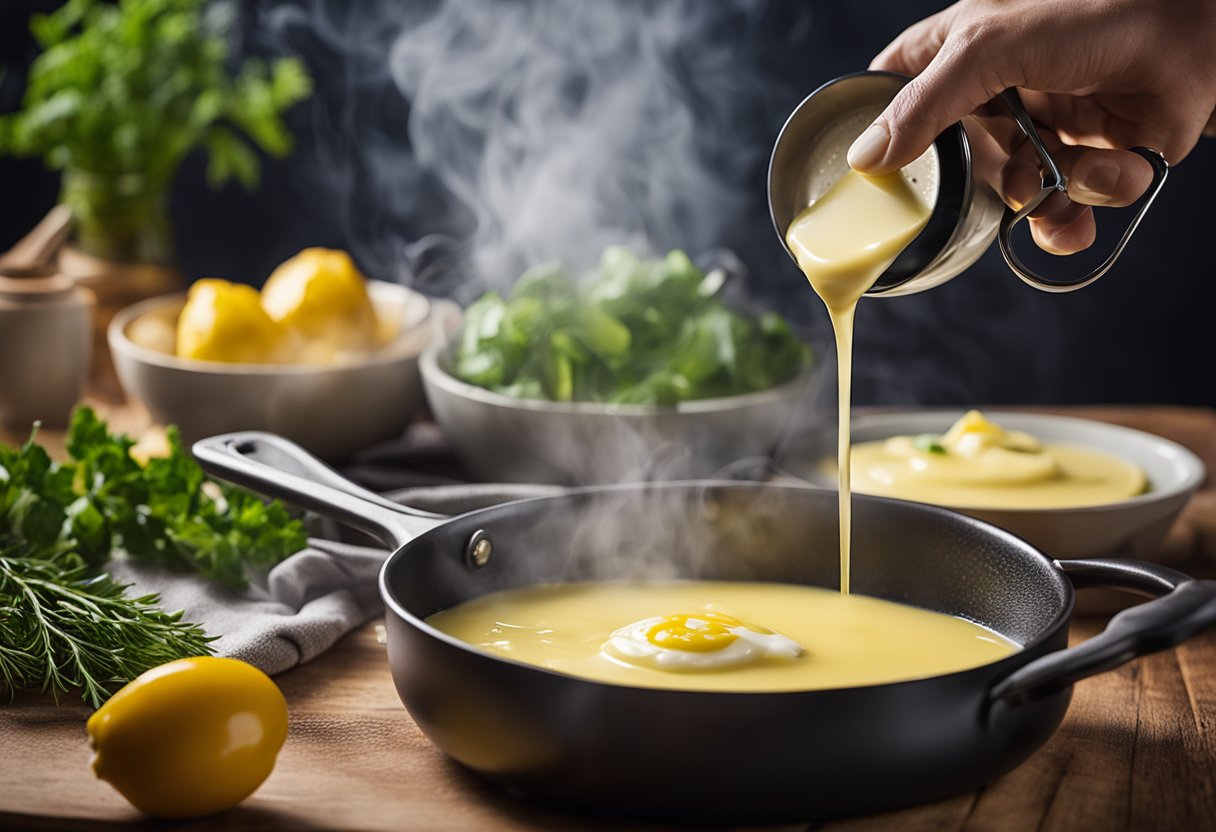
When it comes to serving hollandaise sauce, there are many different options to consider. Here are some of my favorite ways to enjoy this delicious sauce:
Asparagus
One classic way to serve hollandaise sauce is with steamed asparagus. Simply steam the asparagus until it is tender, then drizzle the hollandaise sauce over the top. This is a great side dish for any meal, and it pairs especially well with grilled fish.
Poached Eggs
Another classic way to enjoy hollandaise sauce is with poached eggs. To make Eggs Benedict, simply poach two eggs and place them on top of a slice of toasted bread.
Then, drizzle the hollandaise sauce over the top for a delicious and satisfying breakfast or brunch.
Grilled Fish
Hollandaise sauce is also a great accompaniment to grilled fish. Simply grill your favorite fish until it is cooked through, then drizzle the hollandaise sauce over the top. This is a great way to add some extra flavor and richness to your fish dish.
Toast
If you’re looking for a simple way to enjoy hollandaise sauce, try drizzling it over a slice of toasted bread. This is a great option for breakfast or brunch, and it’s a quick and easy way to enjoy the delicious flavors of hollandaise sauce.
Breakfast
Hollandaise sauce is a classic breakfast dish, and it pairs well with a variety of different breakfast foods. Try serving it with scrambled eggs, bacon, or sausage for a delicious and satisfying breakfast.
Immersion Blender
If you’re looking for an easy way to make hollandaise sauce, try using an immersion blender. This handy kitchen tool makes it easy to blend the ingredients together quickly and efficiently, resulting in a smooth and creamy hollandaise sauce every time.
Frequently Asked Questions
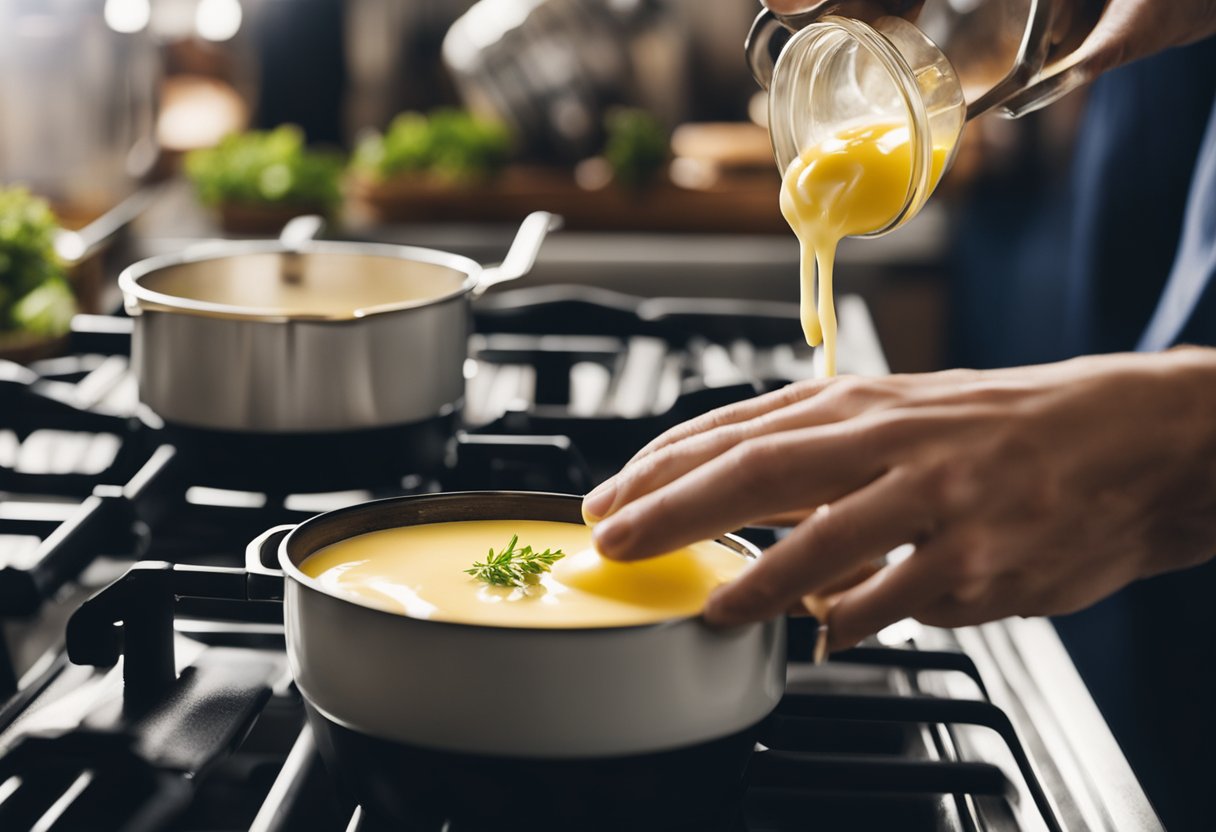
Can you buy pre-made hollandaise sauce?
Yes, you can buy pre-made hollandaise sauce in most grocery stores. However, it is always best to make your own hollandaise sauce from scratch as it tastes much better.
Is it safe to eat cold hollandaise sauce?
No, it is not safe to eat cold hollandaise sauce as it contains raw egg yolks which can cause foodborne illness if not cooked properly. Always make sure to reheat hollandaise sauce thoroughly before consuming.
What is the best hollandaise sauce recipe?
There are many hollandaise sauce recipes available, but the best one is the classic French hollandaise sauce made with egg yolks, butter, lemon juice, and a pinch of cayenne pepper. You can find many variations of this recipe online.
Can Knorr hollandaise sauce be reheated?
Yes, Knorr hollandaise sauce can be reheated using the same methods as homemade hollandaise sauce. However, it is always best to follow the instructions on the package.
Can hollandaise sauce be frozen?
No, hollandaise sauce cannot be frozen as it will separate and become grainy when thawed. It is best to make hollandaise sauce fresh and consume it immediately.
How do you keep hollandaise sauce warm during serving?
To keep hollandaise sauce warm during serving, you can place it in a double boiler or a heatproof bowl set over a pot of simmering water.
Make sure to stir the sauce occasionally to prevent it from curdling or separating. You can also use a thermos to keep the sauce warm if you are serving it on the go.



